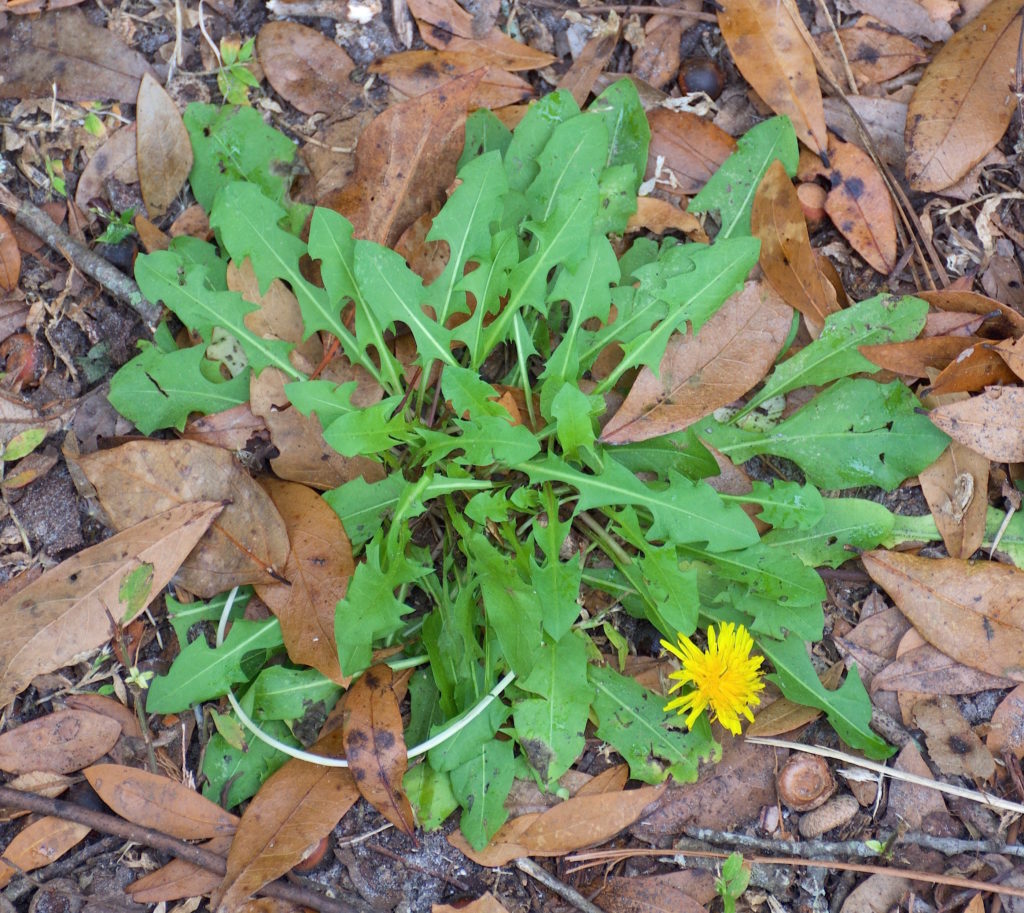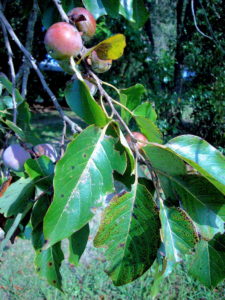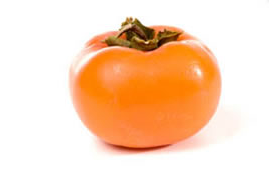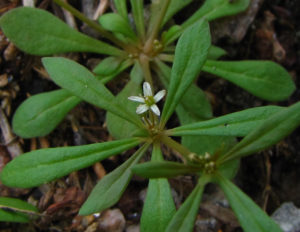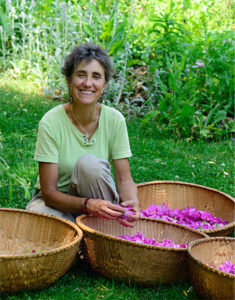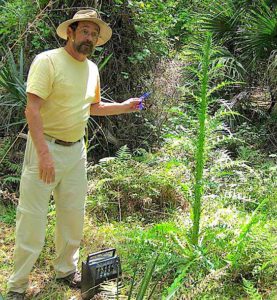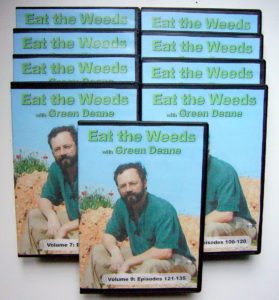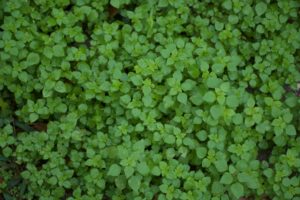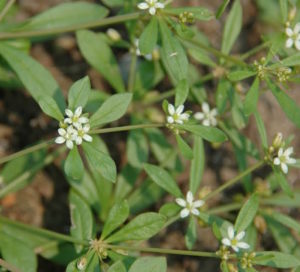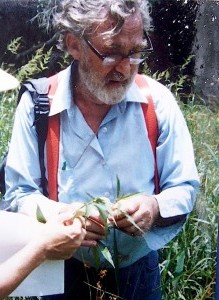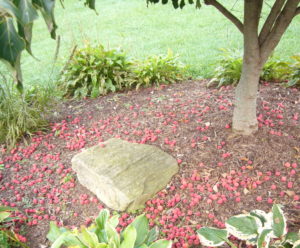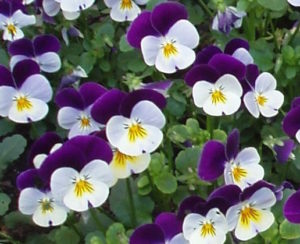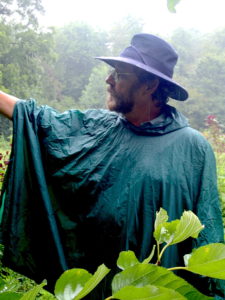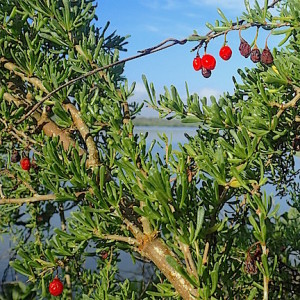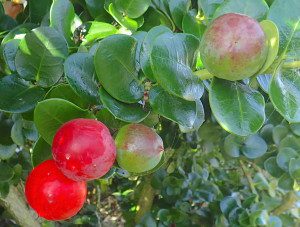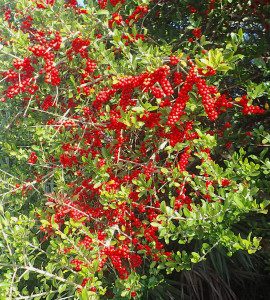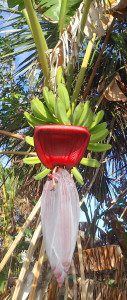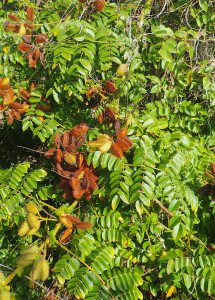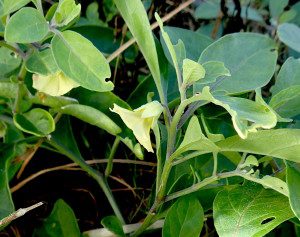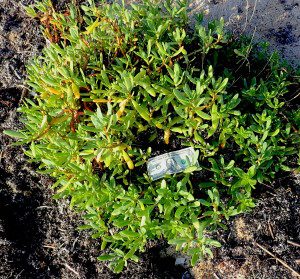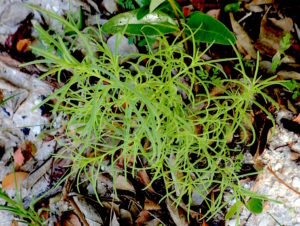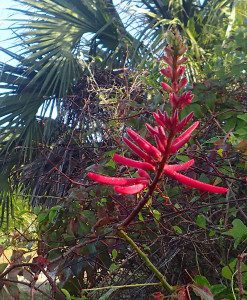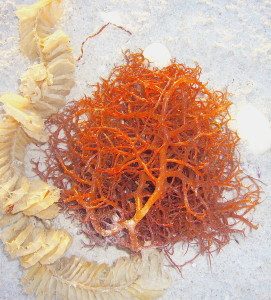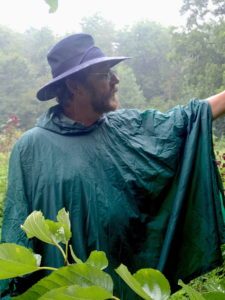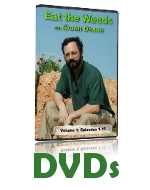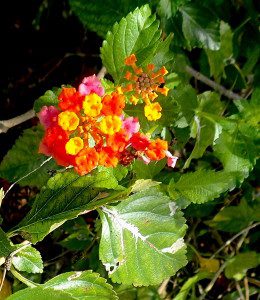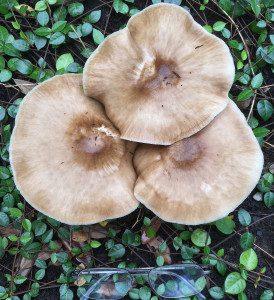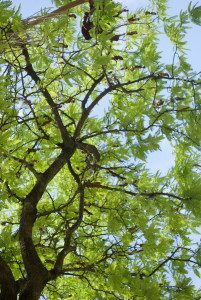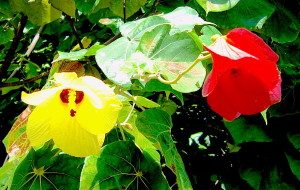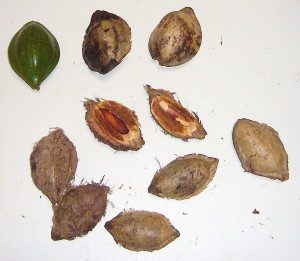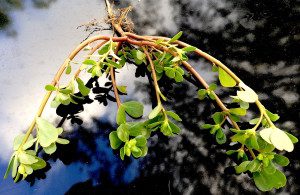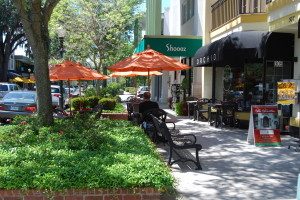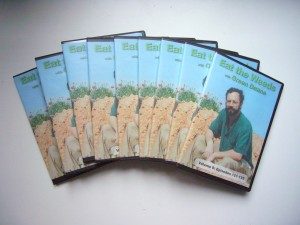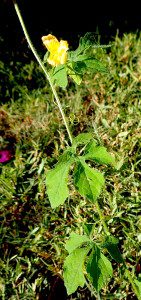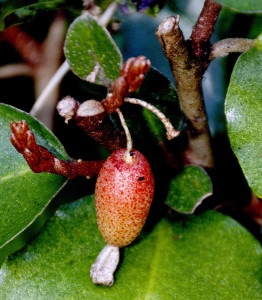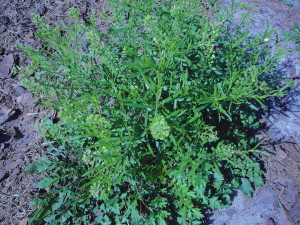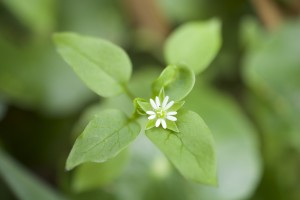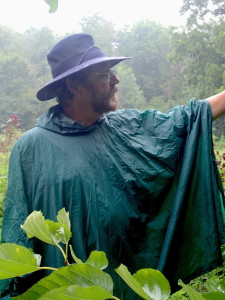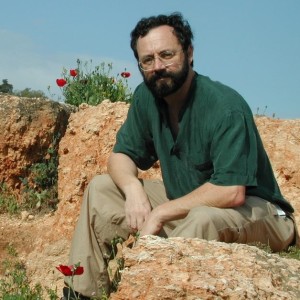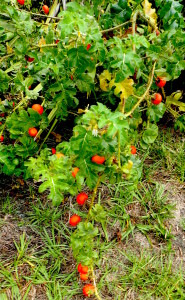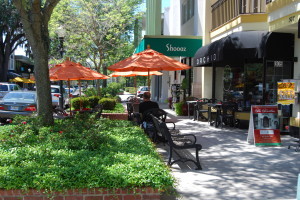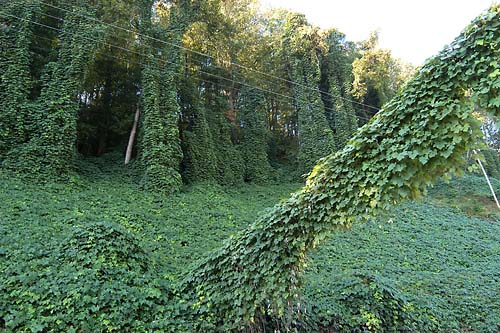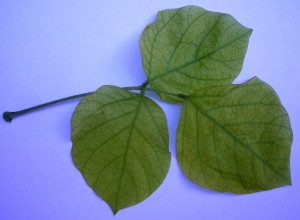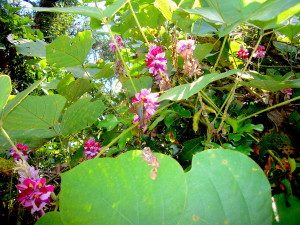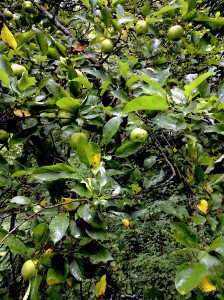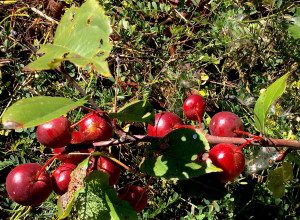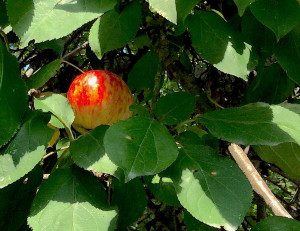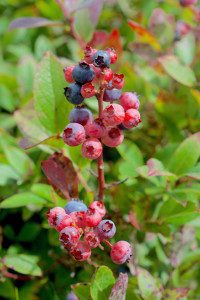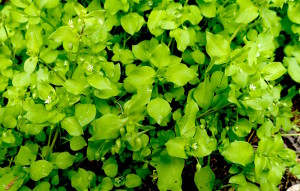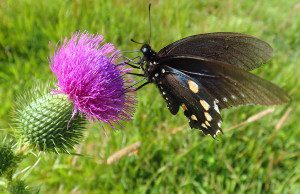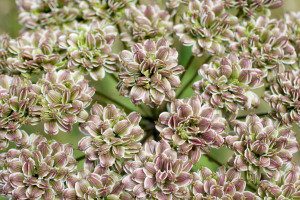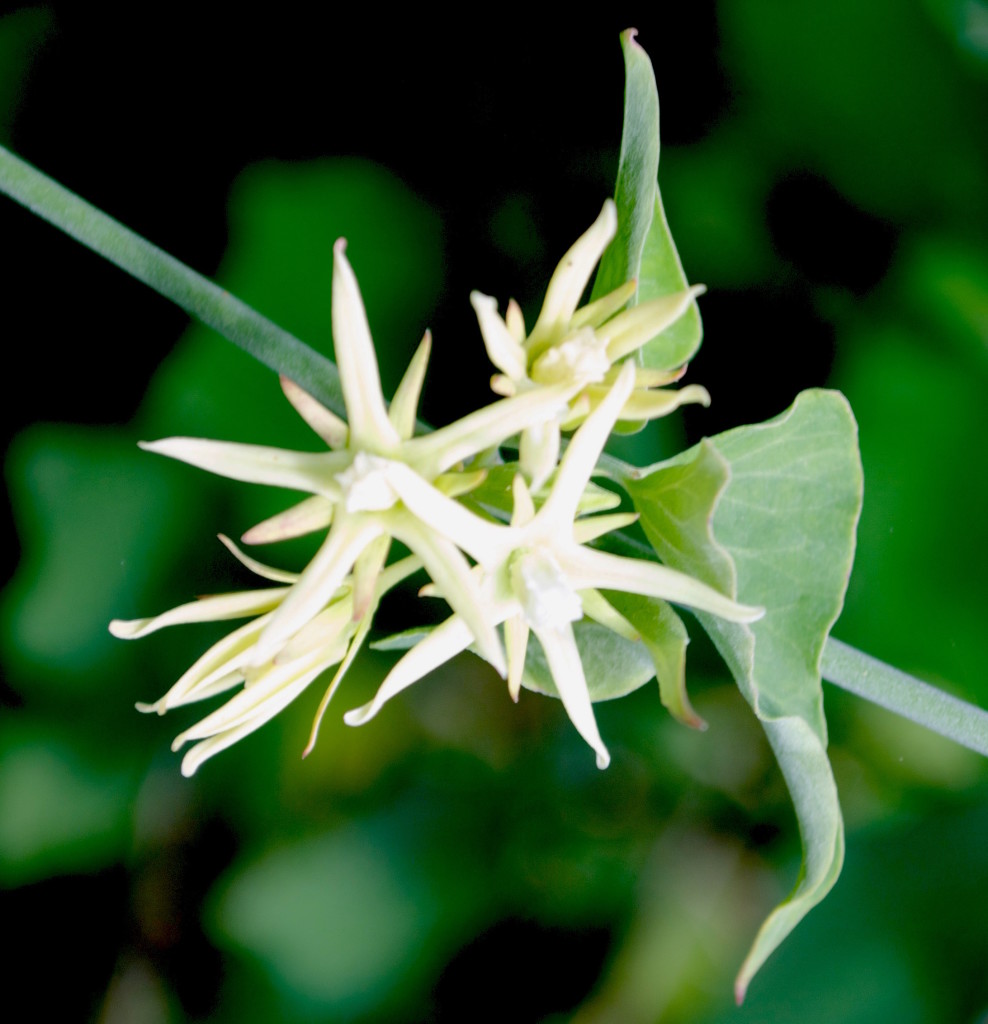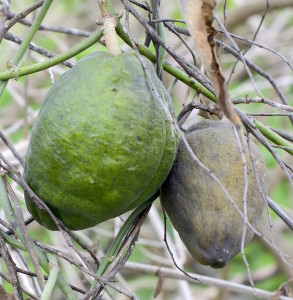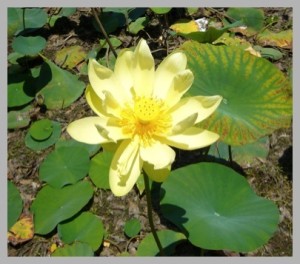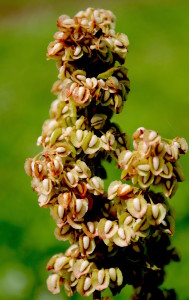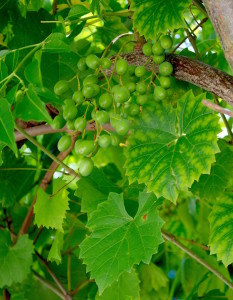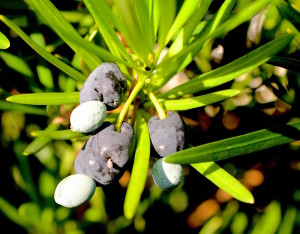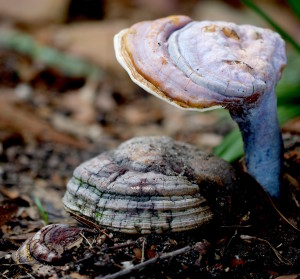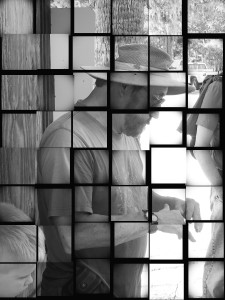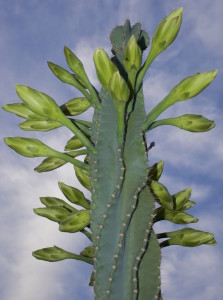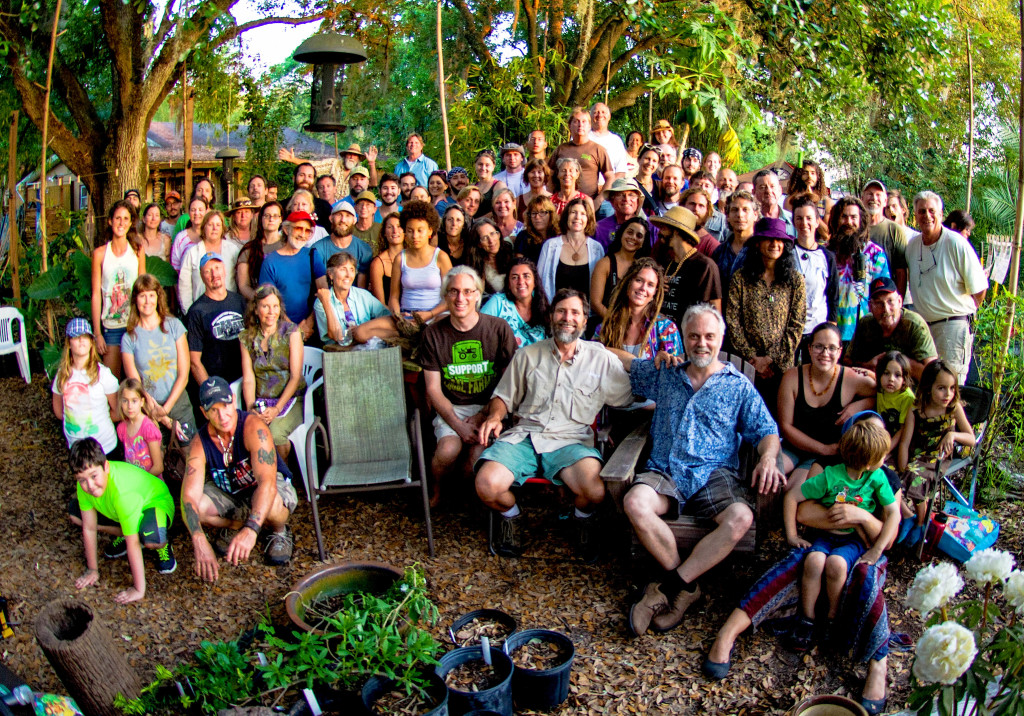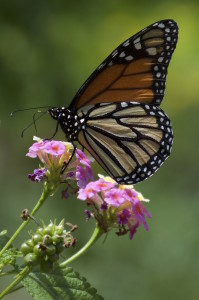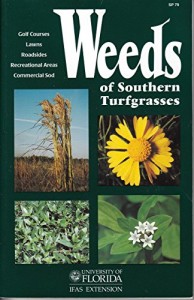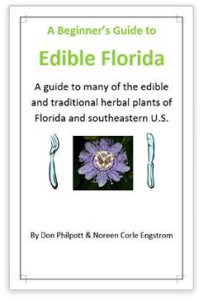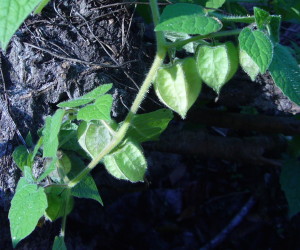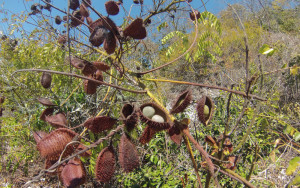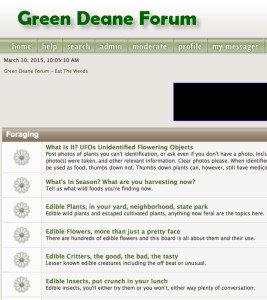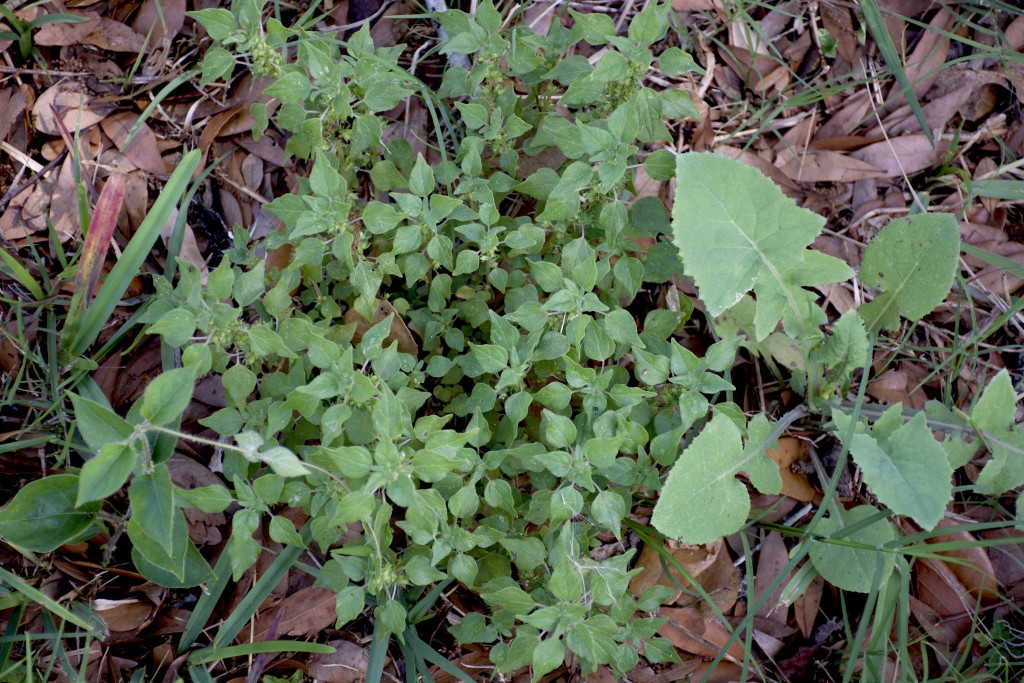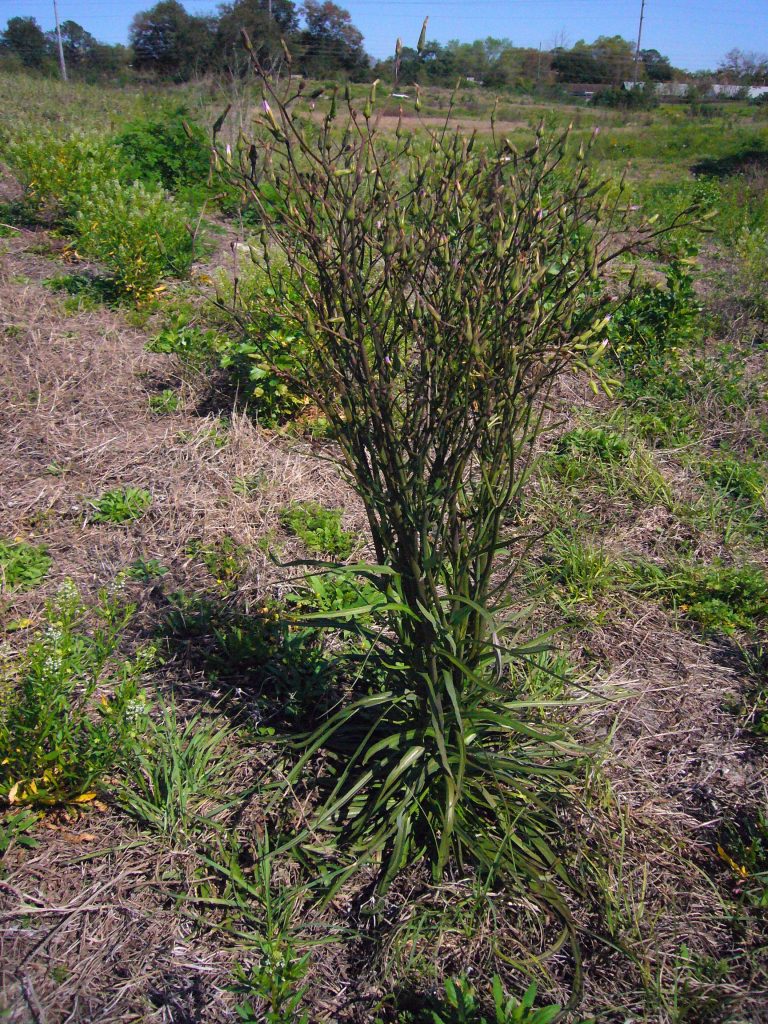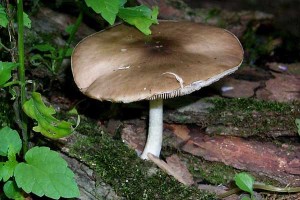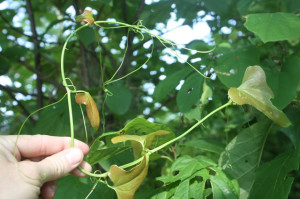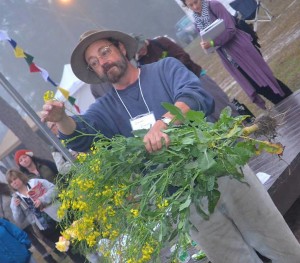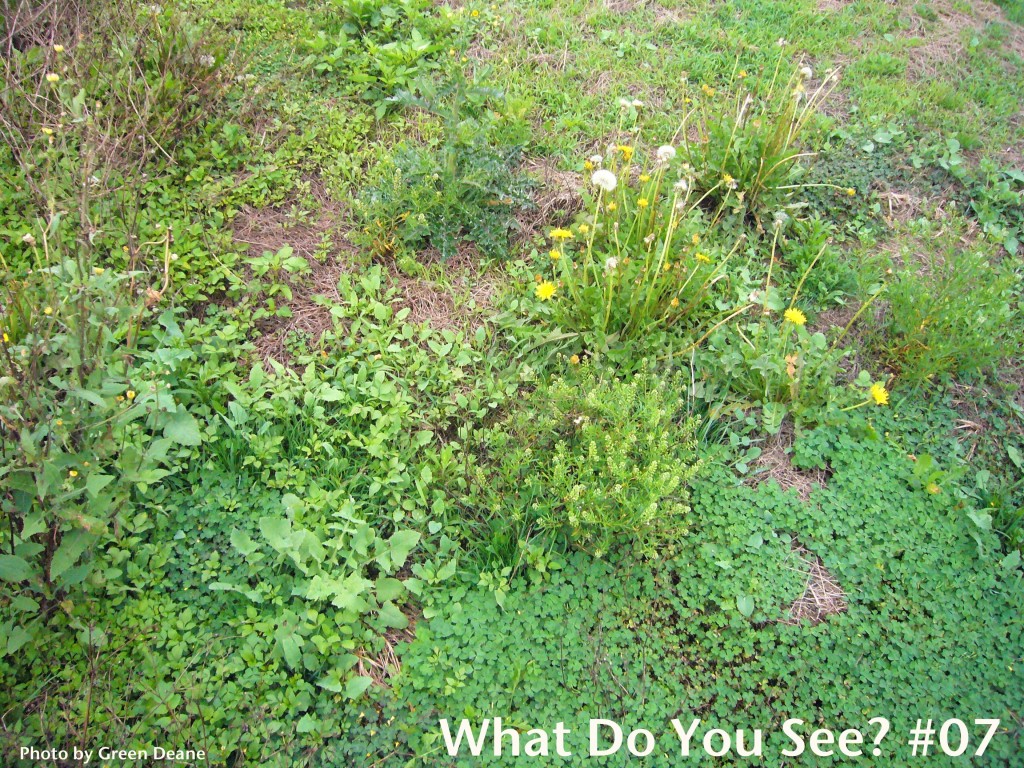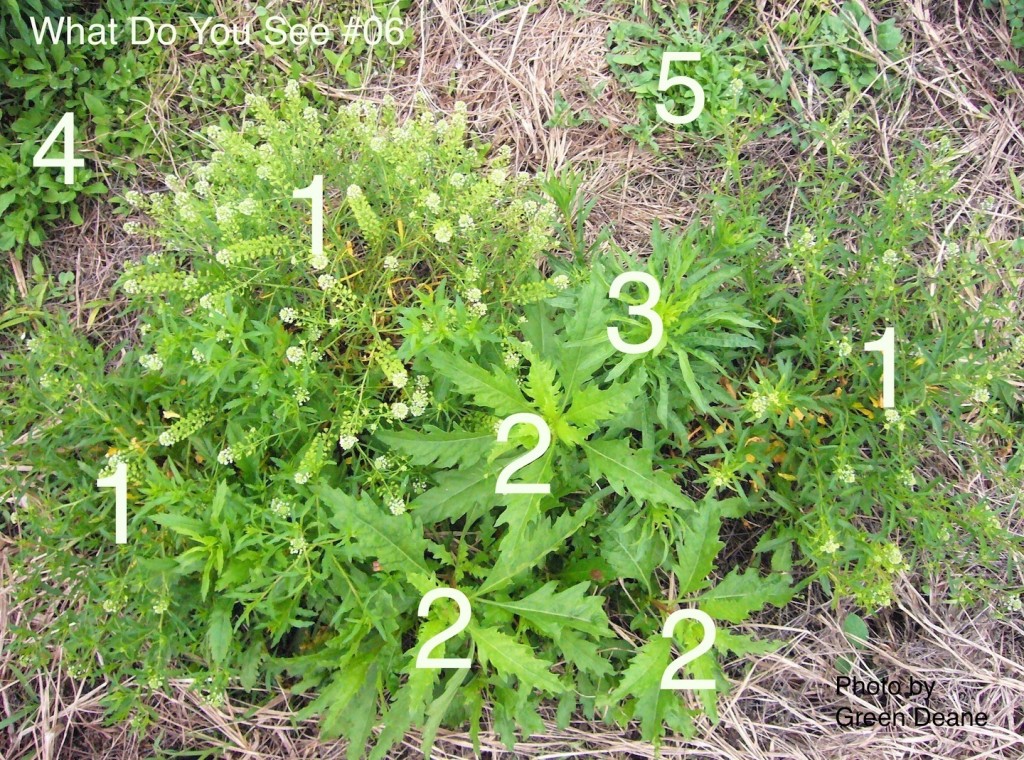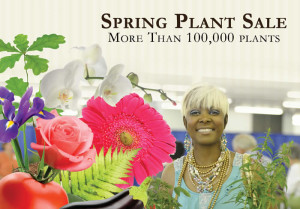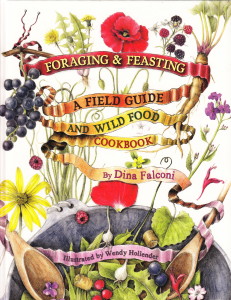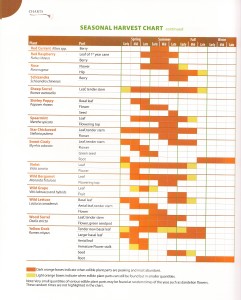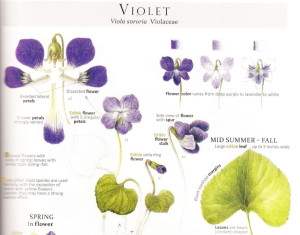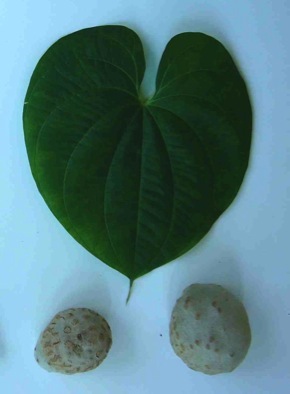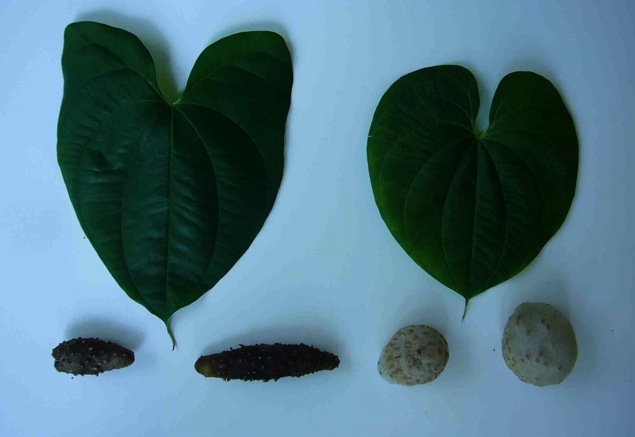In Maine where I grew up the soil was what we called “poor.” That meant it was not only sandy but acidic. Some plants like acidic soil, some do not. Blueberries are an example of a plant that must have acidic soil. And indeed in New England one could find huge fields — literally hundreds of acres — of blueberries. Here in Florida, which is a limestone plate, blueberries are found in pockets of acidic soil such as near Oaks and Pines.
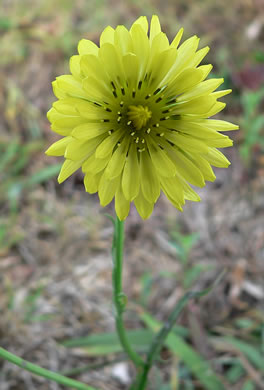
False Dandelions (Pyrrhopappus carolinianus) are also edible.
As has been mentioned before, Dandelions like acidic soil and cooler weather over hot. In northern climes they can grow to two feet tall and have huge blossoms. Collecting Dandelion greens there for supper is easy. We are now in the first week of January and locally Dandelions are doing their best which is rarely more than a few inches high. Instead of finding them everywhere one finds them in pockets of acidic soil. This is also why one foraging book does not fit all. Just in size alone Dandelions from Maine to Florida differ greatly. And the seasons are nearly opposite. To read more about Dandelions, go here.
Plants do not have brains and as far as we know they do not think. But they can have a strategy. Mushrooms that are toxic or deadly to humans do not want humans spreading their spores around. They want other creatures to do it. Berries might be a specific color to attract or repel specific creatures for the same reason. Ripe persimmons are sweet. They prefer animals that can taste sugar to spread their seeds around. Felines, which cannot taste sugar, are not preferred. Dog, bears and wolves et cetera are. And the persimmons pucker does not moderate to sweetness until the seeds are ready to germinate. Thus the tree does not want unripe seeds consumed either. This leads to when the tree fruits.
Locally persimmons are ripe about Columbus Day, mid-October. They are plump and ones on the ground are usually sweet. It is now January and I know of a persimmon tree that still has unripe fruit on it. This is not past-season desiccating fruit but still unripe fruit. One has to ask why? Is it a fluke, a genetic mutation of just this tree, or was there environmental reasons earlier in the year that signaled the tree to hold off on ripening? Did a rainy spring tell it to ripen late? (Rainy springs tell oaks to make lots of acorns.) Did daily temperatures affect it? Is this climate change? Hard to tell. All one can do is watch and see what happens during the year and what the tree(s) do next year. But it also shows plants don’t have to go “by the book.” To read more about persimmons go here.
Through hot and cold weather, wet and dry, one weed found in nearly all of the Americas is the low-growing Carpetweed. It’s native to the Tropical Americas but that has not stopped it from spreading far and wide. I know for certain that the cooked leaves are edible, a few raw ones can go in salads. Mollugo comes from the Latin Mollis for soft. Verticillata means arranged in whorls. The plant’s life cycle is synchronized with showers particularly in dry areas. It can germinate, grow and go to seed within a month. More rain gives it more time. The main problem is it’s scraggly and is an addition rather than the main ingredient. Carpetweed does not compete well with taller plants (thus it loves bald patches in lawns.) Medicinally it can increase one’s nitric oxide production. To read more about Carpetweed go here.
Now’s the time to make sure you have a place at the sixth Florida Herbal Conference in February. Because you are a reader of this newsletter you can get $30 off your registration if you use the registration code GREENDEANE. To read more about the conference and to register go here. This will be my sixth year attending the festival teaching about wild edible plants. There will be many herbal teachers from around the state and nation. Featured keynote speakers are Deb Soule and Guido Mase. The conference’s numerous classes range from Clinical Herbalism to Garden Medicine. Recreational activities at the Lake Wales site include yoga, singing, drumming, and canoeing. Ms. Imani and Beautiful Chorus will provide music. A wide array of artisans and crafters will also have booths at the conference. Camping is included in registration, and indoor cabin lodging and weekend meal plans are also available. Proceeds of the conference will benefit United Plant Savers. Again, to read about and register go here.
Foraging Classes: Except for hurricanes foraging classes usually are held as scheduled. We’re hungry when we are cold and wet so foraging classes are held when it is wet and when it is cold.
Saturday, January 7th, Blanchard Park, 10501 Jay Blanchard Trail, Orlando, FL 32817. 9 a.m. We meet by the tennis courts.
Sunday, January 8th, Bayshore Live Oak Park, 2200 East Lake Road, at Ganyard Road, Port Charlotte. 9 a.m.
Saturday January 14th, Dreher Park, 1200 Southern Blvd., West Palm Beach, 33405. 9 a.m. We meet north of the science center.
Sunday, January 15th, Wickham Park: 2500 Parkway Drive, Melbourne, FL 32935-2335. 9 a.m. We meet at the dog park inside the park.
To learn more about the classes, go here.
All of Green Deane’s videos are available for free on You Tube. They do have ads on them so every time you watch a Green Deane video I get a quarter of one cent. Four views, one cent. Not exactly a large money-maker but it helps pays for the newsletter. If you want to see the videos without ads and some in slightly better quality you can order the DVD set. It is nine DVDs with 15 videos on each. They make a good Christmas gift. Many people want their own copy of the videos or they have a slow service and its easier to order then to watch them on-line. They make a good gift for that forager you know. Individual DVDs can also be ordered. You can order them by clicking on the button on the top right of this page or you can go here. If that link is not working — there have been some site issues — you can use a donation link and email me your order and address.
Want to identify a plant? Looking for a foraging reference? Do you have a UFO, an Unidentified Flowering Object you want identified? On the Green Deane Forum we chat about foraging all year. And it’s not just about warm-weather plants or just North American flora. Many nations around the world share common weeds so there’s a lot to talk about. There’s also more than weeds. The reference section has information for foraging around the world. There are also articles on food preservation, and forgotten skills from making bows to fermenting food. You can join the forum by clicking on the button on the upper right hand side of this page.
There are many reasons to forage. New flavors, textures, unmodified and chemical-free plants are high on the list. While there is more interest in foraging than there used to be it is not a ground swell. Most of the complaints have been about people who don’t understand mushrooms complaining about mushroom hunters. That said many officials and environmentalists see foraging as a problem that needs to be controlled. The following article presents a view of what should be done. One of my concerns is that it is written from the native plant point of view barely touching upon non-natives and ornamentals which we also forage. I wonder if legislation would protect native or just outlaw all foraging? What do you think? Is there substance to her argument or is it another Oh My God native plant spasm?
Forage In the Garden, Not in What’s Left of the Wild
by Lisa Novick, Theodore Payne Foundation for Wild Flowers & Native Plants. (This article originally appeared on The Huffington Post. Embeded links have been removed. However, you can read the original here. )
Wild foraging is one of the hottest new trends. People are eager to acquaint themselves with the soul of their local terroir. In Southern California, the delicious wild flavors of white sage, acorn, elderberry, walnut, toyon and other California native plants have been “discovered” by foragers and chefs, and people are heading into wild lands to gather these ingredients for cuisine with wildcrafted flavors and aromas. Problem is, our wild lands are already stressed from drought, invasive non-native plants and population pressure from Southern California’s approximately 23 million people. When we forage bark, berries, seeds and leaves from native plants in our wild lands, we decrease the plants’ ability to renew themselves. We also diminish habitat and deprive wildlife of the food needed for survival. Do foragers know that up to 90% of all leaf-eating insect species, such as caterpillars of butterflies, can eat only native plants? Do foragers think of their impact on wildlife when they remove acorns, elderberries and other native plant foods? And Southern California wild lands and wildlife are not alone in their distress.
It’s easy to think of wild plants as renewable resources, and they are – when the population is small and the wild lands are vast. But now, in this day and age, it’s different. If even a tiny percentage of our population goes into the wild, in search of native ingredients for our latest recipe, we will devastate what’s left of the natural environment. One of the cardinal rules of foraging is for each person to take no more than 10-20% of what s/he finds. But if even an infinitesimal percentage of the U.S.’s 320 million people takes “only” 10-20%, it will be carnage.
What could we do instead? We could do what people have done for thousands of years and what some are already doing: Grow native plants at home or in community gardens. We could also farm native plants. Agriculture started with the realization that, for a given population, foraging was inadequate and unsustainable. Now, in a world of more than 7 billion people and vastly diminished wild lands, that realization applies more than ever.
We should renew our urban and suburban spaces with native plants and forage in our gardens, not in what’s left of the wild. We should landscape with the native plants we crave, creating more habitat, supporting biodiversity and decreasing our landscape water use. Native gardens provide sustenance to bees, caterpillars, butterflies, birds, lizards and people, among others. In contrast to foraging, native gardens are a net gain for Life.
In our agricultural areas, we should convert some of the non-native monocultures to various native species that yield the desired seasonal ingredients and support healthy, functioning food webs and ecosystems. In Southern California, for example, there could be orchards of elderberry, toyon and Catalina cherry interspersed with white sage, buckwheat and manzanita. In fact, every part of the United States could celebrate its authentic natural character by cultivating native plants for their culinary ingredients. Chefs and others desiring native ingredients would be supporting the creation of some of the greenest jobs imaginable, and we would be regreening our local environment with native plants that support biodiversity.
In my backyard garden, when my daughters were young, they foraged from our ridiculously fecund ‘Dana Point’ buckwheat (Eriogonum fasciculatum ‘Dana Point’), golden currant (Ribes aureum var. gracillimum), and western elderberry (Sambucus mexicana). Before we left for a hike in the local mountains, we picked a few elderberry and mugwort (Artemisia douglasiana) leaves and put them in our pockets, just in case we ran into poison oak. People across the United States could similarly transform their urban and suburban landscapes to supply the native ingredients they desire. Many native plants are suitable for containers – a vast yard is not necessary. Visit a local nursery to purchase the native plants and, if the nursery does not carry them, ask that they begin to keep them in stock.
Southern California is a biodiversity hotspot – one third of its native plants are found nowhere else in the world – and foraging in our wild lands for native plants further devastates these already shrinking populations of plants that have managed to survive the colonial incursions of the last 500 years. In Southern California and the rest of the country, we have predominantly landscaped with non-native plants that deprive the vast majority of our insect and animal species of the food and shelter they need for survival. Then, after erasing native habitat in the places we live, we go into our remnant wild lands and forage native plants. This is not just ironic – it’s heart-breaking.
In a world that is in the initial throes of a sixth mass extinction, this one caused by people erasing native habitat and negatively impacting the biosphere in all sorts of other ways, foraging native plants is not just irresponsible: it is tantamount to ecocide and comparable to eating shark fin soup or hunting elephants, whales and condors.
The foraging movement is an understandable outcome of people yearning to reconnect with the natural world, but we must respect our remaining wild lands. They are precious. We must look beyond our desires of the moment and to the world we are leaving for future generations. It’s great that wildcrafted cuisine has inspired more people to love their local natural environment, but instead of foraging, we must bring this cornucopia of “new” aromas, flavors and ingredients into our lives through farming and landscaping. Let’s become even more intimate with the nature of where we live by cultivating the wild ingredients we desire. Let’s respond to the natural world in a way that is not reminiscent of the rapaciousness of the past. Let’s honor and enjoy the nature of place through cuisine that not only celebrates our terroir, but also celebrates the human ability to change and create a better world.
This is Newsletter 239.
If you would like to donate to Eat The Weeds please click here.

